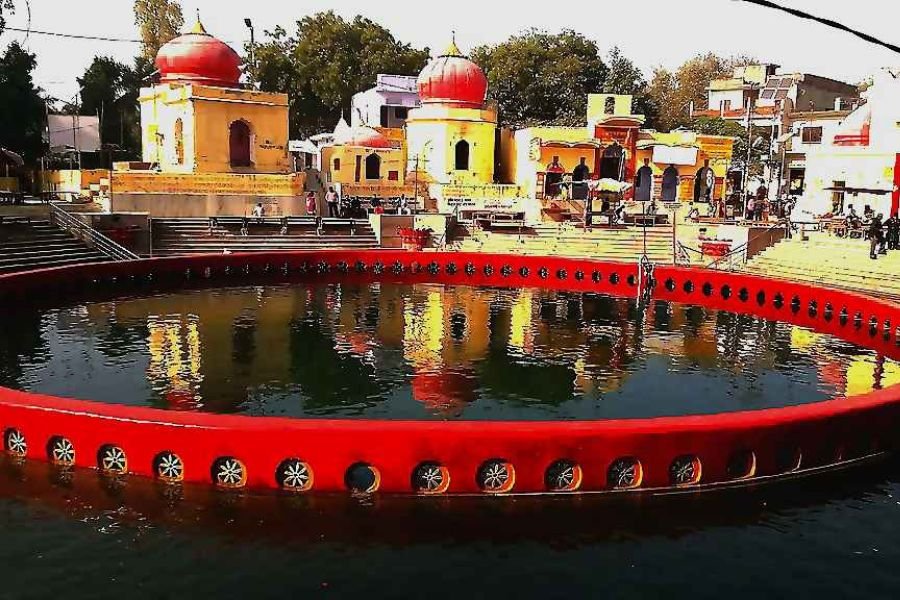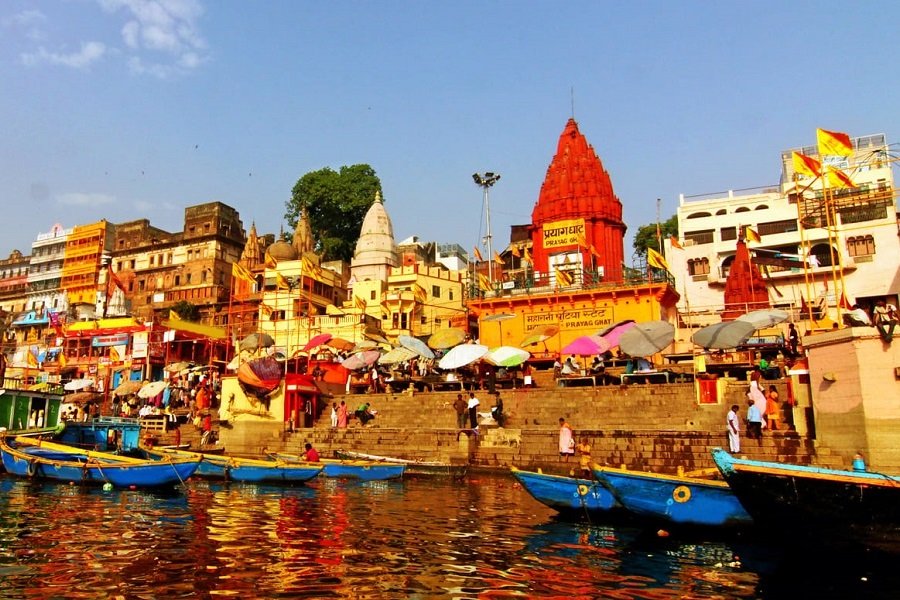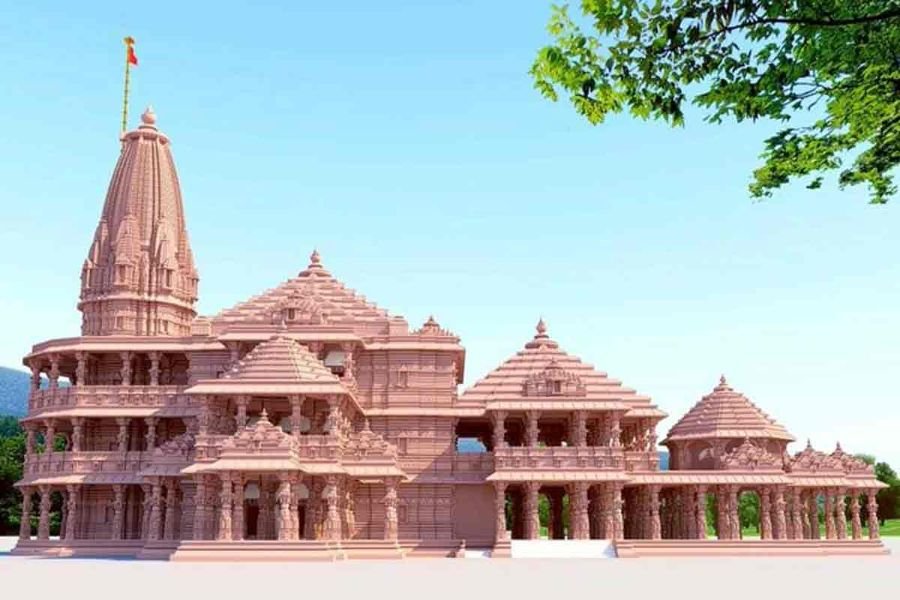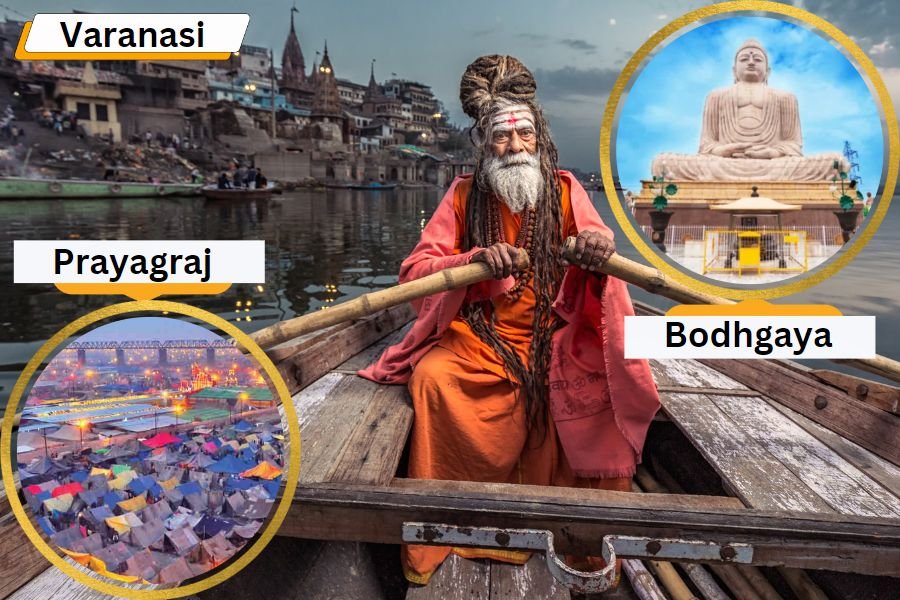Varanasi - Naimisharanya Tour
Ghats of Varanasi – Kashi Vishwanath temple – Naimisharanya
-
DAY 1- Arrival in Varanasi
Upon arrival in Varanasi, check-in at your hotel and rest for a while. In the afternoon, visit the ghats of Varanasi and witness the Ganga Aarti at Dashashwamedh Ghat. Overnight stay in Varanasi. -
DAY 2- Varanasi to Naimisharanya
After breakfast, drive to Naimisharanya, which is about 90 kilometers away from Varanasi. Upon arrival, check-in at your hotel and rest for a while. In the evening, visit the Chakra Tirtha, a sacred pond that is believed to have been created by Lord Vishnu's discus. Overnight stay in Naimisharanya. -
DAY 3- Sightseeing in Naimisharanya
After breakfast, visit the famous temples in Naimisharanya, including the Naimisharanya temple, which is believed to be the spot where the Hindu epic Mahabharata was narrated by the sage Veda Vyasa. You can also visit other temples in the area, including Lalita Devi temple, Hanuman temple, and the Dashashwamedh Ghat. Overnight stay in Naimisharanya. -
DAY 4- Naimisharanya to Varanasi
After breakfast, drive back to Varanasi. Upon arrival, you can visit the famous Kashi Vishwanath temple, which is dedicated to Lord Shiva. You can also explore the narrow lanes and markets of Varanasi and try out some of the local street food. Overnight stay in Varanasi. -
DAY 5- Departure
After breakfast, check-out from your hotel and depart for your onward journey.
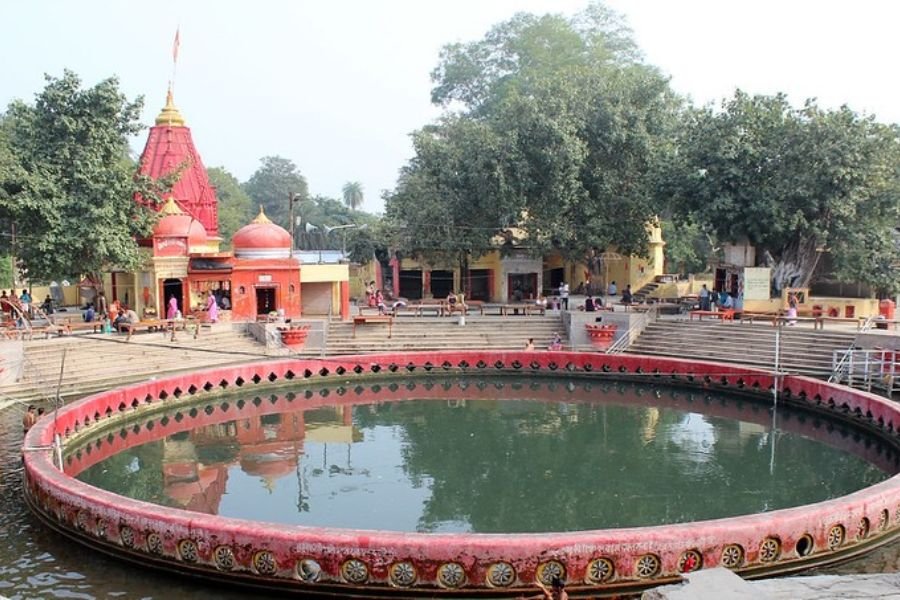
Naimisharanya
Naimisharanya, also known as Neemsar or Nimkhar, is a holy pilgrimage site located in the northern state of Uttar Pradesh in India. It is situated about 90 kilometers away from the city of Varanasi and is one of the most important pilgrimage destinations in the country.
The name Naimisharanya is derived from the words “nemi” which means circle, and “sharanya” which means refuge. It is believed that the area where Naimisharanya is located was once a dense forest where sages and rishis used to perform meditation and penance. According to Hindu mythology, it is also believed that Lord Vishnu took his first incarnation as a fish in the area’s Chakra Tirtha pond.
Naimisharanya is home to several ancient and important temples, including the Naimisharanya temple, which is believed to be the spot where the Hindu epic Mahabharata was narrated by the sage Veda Vyasa. The temple is also known as the Vyasa temple and is a major attraction for pilgrims visiting the area. The temple is located on the banks of the river Gomati and is believed to have been built by the Pandavas, the heroes of the Mahabharata.
Another important temple in Naimisharanya is the Lalita Devi temple, which is dedicated to the goddess Lalita Devi, a form of the goddess Durga. The temple is known for its beautiful architecture and is a popular destination for pilgrims visiting the area. The Hanuman temple in Naimisharanya is also an important temple and is dedicated to the Hindu god Hanuman, who is known for his strength and devotion.
Naimisharanya is also home to several other important temples, including the Dashashwamedh Ghat temple, which is located on the banks of the river Gomati. The temple is known for its beautiful architecture and is a popular destination for pilgrims visiting the area. The area is also known for its sacred ponds and water bodies, including the Chakra Tirtha, which is believed to have been created by Lord Vishnu’s discus.
Apart from its temples and holy sites, Naimisharanya is also known for its natural beauty and serene atmosphere. The area is surrounded by dense forests and is a popular destination for nature lovers and adventure enthusiasts. The area is also home to several ashrams and yoga centers, where visitors can learn about the ancient practices of yoga and meditation.
Overall, Naimisharanya is a fascinating and important pilgrimage site in India, known for its ancient temples, natural beauty, and serene atmosphere. It is a must-visit destination for anyone interested in Hindu mythology and spirituality, and offers a unique glimpse into India’s rich cultural heritage.

